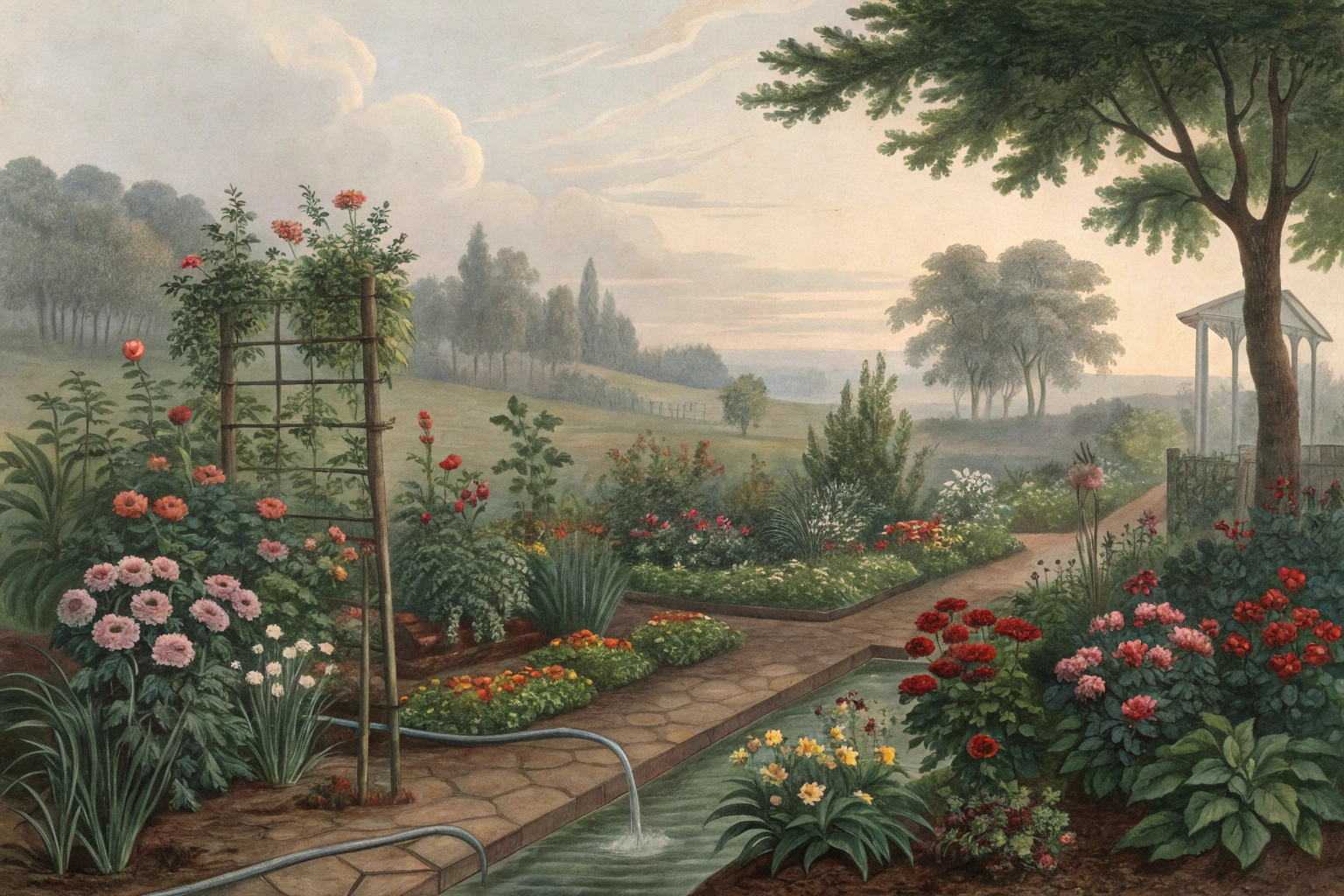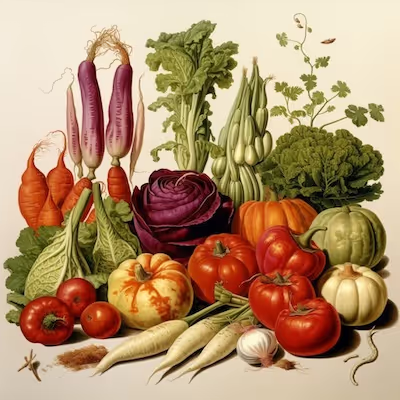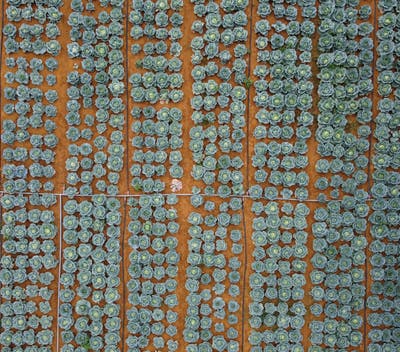Greywater Gardening: Safe Ways to Reuse Household Water

Greywater gardening
Smart greywater gardening cuts outdoor demand by 15–40%: route shower and laundry rinse to mulch basins. For greywater gardening, use phosphate-free, low-sodium soaps, skip kitchen sink water, and never store water. Practice greywater gardening safely: keep it off edible leaves, apply within 24 hours, and check local codes. Stick around for simple setups, soap-safe plant picks, and tricks that keep soil fed without funk.
Cheatsheet: Safe Garden Use of Greywater
💧 Sources You Can Use
- Laundry (if non-toxic detergent)
- Shower + Bathtub
- Sinks (no food scraps, minimal grease)
🚫 Avoid
- Toilet water
- Kitchen sink (grease, pathogens)
- Dishwasher water
- Harsh chemicals (bleach, borax, sodium salts)
🌱 Permitted Plant Uses
- Trees, shrubs, ornamental beds
- Fruit trees (apply below fruit, not on edible part)
- Do not wet edible leaves (lettuce, herbs)
- Best used in soil, not on foliage
🩺 Health and Nutrition
- 80% of household water reuse possible
- Prevents 60% drinking water waste
- Reduces drought vulnerability
🔧 Tools and Products You'll Need
- 3-way valve
- Hose or dripline
- Mulch basin
- Non-sodium detergent
- Filter basket
- PVC or flexible piping
- Mulch
- Permits (check local law)
🛠️ Step-by-Step
- Plan system: Identify outflow points; select plants and placement; avoid root crops.
- Install diverter valve: Direct water to garden via tubing when needed.
- Filter solids: Use drain basket or mesh to trap hair, lint, debris.
- Distribute: Pipe water directly to mulch basin or dripline. Avoid pooling.
- Mulch heavily: 2–4 in (5–10 cm) over application site to filter and protect roots.
- Rotate use: Change sites to avoid buildup of residues or salts.
- Flush system: Monthly with clear water to prevent soil saturation (especially in low rainfall).
⚠️ Safety
- Apply within 24 hours to limit bacteria
- Keep children and pets away from application site until soil absorbs water
- Never spray greywater
🌎 Self-Sufficiency
- 50–75 gallons (190–285 liters) per household reused weekly
- Supports resilient, food-producing gardens
- Reduces stormwater runoff and erosion
I started routing shower and laundry water to my figs during a 104 F heat wave, 40 C, and watched the trees shrug off August like it was April. The trick was simple plumbing, smarter soap, and burying the flow under mulch.
Greywater gardening turns rinse water into irrigation without turning your yard into a swamp. Do it right and you cut potable water use, keep plants thriving, and sleep fine knowing you stayed inside code.
Greywater is lightly used water from showers, tubs, bathroom sinks, and laundry. I never pipe toilet water or kitchen sink water because of pathogens, grease, and food scraps.
Hair, lint, and soap show up, so filtration and mulch matter. I avoid dishwasher water because of salts and high pH.
- Keep it subsurface. I bury outlets 2 to 6 inches deep, 5 to 15 cm, to prevent contact and evaporation.
- Use it the same day. Stored greywater turns anaerobic fast and smells like an airport mop closet.
- No spray irrigation. Only soil infiltration or drip lines under mulch.
- Keep it off edible leaves and root crops. Fruit trees and ornamentals love it.
- Prevent runoff or ponding. If the soil can’t take it, pause the system.
- Install a diverter valve. I flip to sewer during heavy rain, laundry bleach, or illness.
“Subsurface irrigation reduces exposure and provides effective pathogen barriers.” WHO, Guidelines for the Safe Use of Wastewater, Excreta and Greywater, 2006
Outdoor use averages about 30 percent of household water in the U.S., and in dry regions it can hit 70 percent. EPA WaterSense
Showers, baths, and laundry represent a huge slice of indoor use. The AWWA Residential End Uses of Water study pegs showers at roughly 20 percent and clothes washers near 17 percent of indoor demand.
Diverting even half of that to the yard can shave 15 to 40 percent off your potable use depending on climate, soil, and plantings. My summer bills dropped by a third once the laundry fed citrus and olives.
The washer’s internal pump pushes water through a 3-way valve, a vacuum break, and 1 inch tubing, 25 mm, to mulch basins. I size 1 to 3 outlets per load depending on soil.
Pros: no storage tank, low cost, easy permit path in many places. Cons: flow is batchy, lint can clog, you must choose plant-friendly detergent.
Gravity splits flow with wyes into multiple mulch basins. No filters or pumps if you keep slope steady, about 2 percent fall, and lines large, 38 to 50 mm.
Pros: energy free and durable. Cons: layout matters and retrofits can feel like Tetris in crawlspaces.
A small surge tank, not long-term storage, evens out shower and laundry pulses. A screened filter and pump feed subsurface drip with flush valves.
Pros: more control and cleaner distribution. Cons: higher cost and maintenance, plus stricter code requirements.
- Mulch basins: 8 to 12 inches deep, 20 to 30 cm, filled with coarse wood chips to spread and biofilter the flow.
- Purple pipe is the industry standard color for nonpotable lines. I label valves and keep a printed schematic near the washer.
- Air gaps and vacuum breakers prevent cross-connection. Inspectors love seeing them.
- Fruit trees: fig, citrus, pomegranate, mulberry, avocado on mounds in free-draining soil.
- Vines and shrubs: grape, passionfruit, rosemary, native sages, bamboo in root barriers.
- Ornamentals: crape myrtle, lilac, oleander, pittosporum, roses with heavy mulch.
Skip salt-sensitive prima donnas like blueberries, azaleas, camellias, and Japanese maples. I keep greywater away from lettuce, spinach, and carrots because leafy and root crops invite contact.
- Choose liquid detergents low in sodium and boron. Powdered products often use sodium salts as fillers.
- Avoid bleach and antimicrobial additives. Oxygen bleach in moderation beats chlorine for soil life.
- Look for plant-friendly labels or explicit “greywater safe” notes. Potassium-based soaps play nicer with soil structure than sodium.
High sodium disperses soil clays and wrecks infiltration. If sodium sneaks in, I top-dress with compost and add gypsum, 5 to 10 pounds per 100 square feet, 2.5 to 5 kg per 10 m², then irrigate with fresh water to leach.
Clay needs more outlets, longer basins, and lighter doses. Sand takes bigger pulses but leaches nutrients, so I lean hard on mulch.
Typical washer discharge runs 7 to 15 gallons per minute, 26 to 57 L per minute, for 2 to 5 minutes per cycle. I split that to 3 to 6 basins to avoid surfacing.
- Many states allow simple clothes-washer systems without a full plumbing permit if discharge stays subsurface and on-site. California’s Title 24 and Chapter 15 of the Plumbing Code outline this approach.
- Backflow prevention, setbacks from wells, and labeling are common requirements. Your local authority rules the details.
- Public health agencies and extensions echo the same pattern: distribute below grade, avoid spray, and keep it on your property. See University of California ANR and Texas A&M AgriLife guidance.
I bring an annotated sketch to permitting and list every safety element: diverter, air gap, subsurface outlets, labels. That shortens inspections.
- DIY laundry-to-landscape: 100 to 300 USD, 95 to 285 EUR in parts.
- Pro-installed branched drain: 1,500 to 3,500 USD, 1,425 to 3,325 EUR.
- Pumped filtered system: 2,500 to 6,000 USD, 2,375 to 5,700 EUR depending on controls and drip hardware.
At water rates of 6 to 15 USD per 1,000 gallons, 1.6 to 4.0 USD per m³, many households see payback in 2 to 5 years, faster in arid cities. The real win is plant vigor during heat spikes.
- Clean lint filters monthly and flush manifolds seasonally.
- Refresh wood chip mulch yearly to keep basins thirsty and biological.
- Walk the lines after big storms and once mid-summer. If I smell it, I fix it that day.
- Odor at outlet: increase mulch depth, split flow to more basins, and verify same-day use.
- Ponding: reduce each outlet’s share, add a basin, or pause the system after rain.
- Clogged lines: install a cleanout tee and a simple screen filter near the source.
- Mulch basins: cheapest and forgiving. Best for trees, shrubs, and vines.
- Subsurface drip with filter and flush valves: precise and scalable. Better for mixed beds and sloped gardens.
- Constructed wetland pre-treatment: aesthetic and resilient. Useful for fine particles before drip, but needs space and design chops.
- Three-way diverter valve rated for warm water. Mount it where you can reach it with wet hands and a laundry basket.
- Vacuum breaker or air gap to prevent backflow. Match the pipe size to your washing machine hose or drain line.
- UV-stable polyethylene tubing, 25 mm, with barbed tees and clamps. Purple if available for easy identification.
- Inline screen filter, 80 to 120 mesh, if feeding drip. Put unions on both sides for simple cleaning.
- Subsurface dripline with built-in emitters 0.6 to 0.9 gph, 2.3 to 3.4 L/h, and flush valves at ends.
- Coarse wood chips, not bark fines. Wood chips spread flow and feed the soil food web.
I throttle outlets in winter or flip to sewer during long wet spells. In freezing climates, slope lines to drain dry and insulate exposed runs.
Hot, dry summers need more basins per source to avoid salinity buildup. I blend rainwater events with greywater cycles for a kinder salt balance.
With 3 loads per week, I feed 4 fruit trees on loam using 4 mulch basins spaced at the drip line. On clay I split the same washer to 6 basins and add a fresh-water top-up in heat waves.
Shower lines serve a pair of grapes and a rose hedge with gravity splits. Kitchen sink stays on sewer, nonnegotiable.
“Keep it simple and avoid storage.” Art Ludwig, Oasis Design, author of Create an Oasis with Greywater
AWWA Residential End Uses of Water, 2016: showers about 20 percent, clothes washers about 17 percent of indoor use. That is your greywater gold mine.
- Can I use it on vegetables? I apply it to fruit trees and perennials and keep it off edible leaves and roots.
- Do I need a permit? Many places allow washer-only systems with basic safety measures. Check local code before cutting pipe.
- Will soaps hurt soil? Choose low-sodium, low-boron liquids and rotate with fresh water. Compost and gypsum buffer mistakes.
- Does it attract pests? Subsurface distribution under mulch does not, and the soil biology handles organics.
Greywater gardening pairs beautifully with rain tanks and swales. I use rain to flush salts and greywater to carry carbon to the rhizosphere.
Mulch basins double as fungal nurseries, which means better water holding during heat spikes. Soil becomes the quiet reservoir you always wanted.
- EPA WaterSense, Outdoor Water Use in the United States, facts and statistics.
- AWWA, Residential End Uses of Water, Version 2, 2016.
- WHO, Guidelines for the Safe Use of Wastewater, Excreta and Greywater, 2006.
- University of California ANR, Greywater Guide for Southern California Gardens.
- Texas A&M AgriLife Extension, Using Graywater and Rainwater in the Landscape.
- California Plumbing Code, Chapter 15, Nonpotable Water Systems.
- Oasis Design, Art Ludwig, Create an Oasis with Greywater.

Want smarter plant choices? 🪴
Frequently Asked Questions: Greywater Gardening
Which household sources provide the safest water for use in plant beds?
Water from showers, bathtubs, and laundry (except diaper or heavily soiled loads) tends to work best. Avoid any water that contains harsh chemicals, bleach, disinfectants, or has contacted human waste. Kitchen sink water often contains food grease and heavy detergents that may damage roots or soil health.
What cleaning products are safe for use if I want to reuse household water on my garden?
Biodegradable and low-phosphate soaps and detergents break down quickly and avoid accumulation of harmful salts and chemicals. Choose products labeled as “plant-friendly” or suitable for septic systems. Avoid products with sodium, boron, or chlorine bleach, as these can harm both soil microbes and plants.
Can I store greywater before using it on my garden?
Apply water promptly, ideally within 24 hours. Storing it longer encourages bacteria to multiply and may create unpleasant odors. If storage is necessary, use a sealed container and keep temperatures below 68°F (20°C) to slow microbial growth.
Which plants tolerate household water best?
Ornamental shrubs, fruit trees, and many perennials thrive with reused household water. Avoid using it on delicate seedlings or edible leaves you plan to eat raw. Root crops and vegetables with edible roots can tolerate it if soaps are mild and sodium-free.
Does reusing household water affect soil health?
Over time, sodium and certain cleaning agents can build up in soil. Flush garden beds with rainwater or fresh tap water every few weeks to prevent salt accumulation, especially during dry spells. Monitoring soil structure and drainage ensures long-term health.
How should I deliver water to my plants safely?
Apply greywater directly to the soil, not on leaves or edible parts. Use a drip system, soaker hose, or simply pour at the plant base. Limit contact with garden paths or play areas to reduce risks from any lingering bacteria.
Are there seasonal considerations for using household water in the garden?
In colder months, pipes and containers may freeze, so drain systems before temperatures drop below 32°F (0°C). During hot, dry periods, monitor plant response and flush soil to prevent salt buildup.
Greywater gardening works best when you keep it clean and simple. Pull from showers, tubs, and laundry that uses plant-safe, low-sodium, no-boron soaps; skip kitchen sink, softener discharge, diaper or bleach loads. Get it to the soil fast, within 24 hours, never onto leaves. Use a watering can, subsurface drip, or mulch basins to feed the root zone. Aim it at trees, shrubs, vines, and perennials; avoid salad greens and raw-eaten roots.
Filter hair and lint, rotate zones, and flush with fresh water if salts creep up. Keep a diverter valve so you can switch to sewer when soaps change or rain hits. Mind local rules, maintain the lines, watch your soil. Fold it into broader water conservation. Done right, greywater gardening saves potable water, builds drought resilience, and keeps your beds thriving without wasting a drop.
The Money Saver’s Guide to Greywater Gardening
Greywater gardening drops utility bills swiftly while feeding your plants—even in drought. Curb water waste and boost self-sufficiency: an average two-person home can redirect up to 17,000 gallons (64,400 liters) of usable water each year.
Lawns, ornamentals, and fruit trees flourish on repurposed laundry and shower water, which delivers both moisture and trace nutrients. Smart routing reduces municipal fees and can extend rainwater stores for months.
Reclaim Opportunities: Hidden Water Sources
- Washing machine rinse cycles yield the most: up to 20–40 gallons (75–150 liters) per load, low in contaminants.
- Baths and showers offer moderate loads—typically 5–15 gallons (20–60 liters) per use.
- Bathroom sinks generate trickles, best for small planters or spot irrigation.
Zero-Cost Delivery Methods
- Gravity-fed piping skips pumps and electricity. Slope yard at least 2 percent downhill (about 1 inch per 4 feet / 2 cm per 1 m) from water source.
- Clean, reused hoses or buckets channel water to mulch basins around shrubs and trees.
- Simple diverter valves installed at laundry or bath output cost under $20 and switch between sewer and garden use in seconds.
Maximize Every Drop with Strategic Planting
- Grow fruit trees, berry bushes, and perennials near greywater outlets—they absorb steady moisture and tolerate minor soap residue.
- Mulch thickly to break down residuals and keep soil moist, reducing supplemental irrigation by up to 50 percent.
- Rotate uses: irrigate different plant zones weekly to avoid salt buildup and excess soil moisture.
Safe Reuse, Strong Yields
- Choose soap brands labeled “biodegradable,” no added sodium or boron. Excess sodium lowers plant vigor and can compact soils permanently.
- Never apply greywater directly onto edible leaf crops or root vegetables. Direct to soil only, below mulch.
- During freezing conditions (below 32°F / 0°C), disconnect outside lines to prevent burst pipes and frost damage; use water for indoor plants instead.
Emergency Resilience
- Simple greywater buckets keep gardens producing when outdoor watering bans start—vital during wildfires or regional droughts.
- Greywater-fed systems reduce demand on stored potable supplies, extending reserves for drinking and cooking during disruptions.
Find out which plants will thrive in your garden!
Answer a few fun questions and get custom plant recommendations perfect for your space. Let’s grow something amazing together!

start your season





